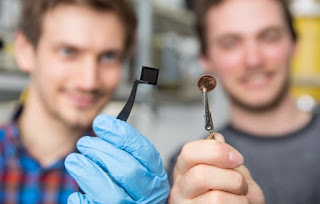 |
| Credit: Getty Images |
Topics: Computer Engineering, Quantum Computing, Quantum Teleportation, Star Trek
For the first time, researchers have teleported a qutrit, a tripartite unit of quantum information. The independent results from two teams are an important advance for the field of quantum teleportation, which has long been limited to qubits—units of quantum information akin to the binary “bits” used in classical computing.
These proof-of-concept experiments demonstrate that qutrits, which can carry more information and have greater resistance to noise than qubits, may be used in future quantum networks.
Chinese physicist Guang-Can Guo and his colleagues at the University of Science and Technology of China (USTC) reported their results in a preprint paper on April 28, although that work remains to be published in a peer-reviewed journal. On June 24 the other team, an international collaboration headed by Anton Zeilinger of the Austrian Academy of Sciences and Jian-Wei Pan of USTC, reported its results in a preprint paper that has been accepted for publication in Physical Review Letters. That close timing—as well as the significance of the result—has each team vying for credit and making critiques of the other’s work.
The name quantum teleportation brings to mind a technology out of Star Trek, where “transporters” can “beam” macroscale objects—even living humans—between far-distant points in space. Reality is less glamorous. In quantum teleportation, the states of two entangled particles are what is transported—for instance, the spin of an electron. Even when far apart, entangled particles share a mysterious connection; in the case of two entangled electrons, whatever happens to one’s spin influences that of the other, instantaneously.
“Qutrit” Experiments Are a First in Quantum Teleportation, Daniel Garisto, Scientific American
